
Hidden Beauty

The last few months I’ve taken on the new, prestigious role of "Photographer to the Plant Stars" [of Brookgreen Gardens]. Just like your standard run of the mill human celebrities, some of the plants can act like more of divas than others. I’m glad to report I’ve only had a handful of particularly demanding ones that have insisted I wasn’t getting their “good side.” Jimmy Brandt, one of our horticulturists, has also joined in to help. Things have been going smoothly, aside from the occasional “No pictures, please!” (which, what do you expect when one of your gardens, and favored photo locales, is the Old Kitchen? When the stars are eating, they want to be left alone!). Oh no, I’m starting to think we may actually be more paparazzi and less Annie Leibovitz - yikes!
Identity and existential crises aside, this photographic journey into the kingdom Plantae, is yielding a plethora of images that call our Plant Records Database home. Taking the time to create what can amount to a photographic essay of the identifying traits and personalities of our plants is a wonderful process. For me, it’s been a great way to take a moment and appreciate the delicate details we tend to miss.
I’m going to share some highlights with you from our photographic escapades. What may seem surprising is that you’re not going to see many flower pictures. This is more to highlight the other gems that are attractive in their own rights, even though we often overlook them.
Let’s start with a popular cultivar (or cultivated variety) of Impatiens hawkeri (or New Guinea impatiens) called Sunpatiens Compact Red.
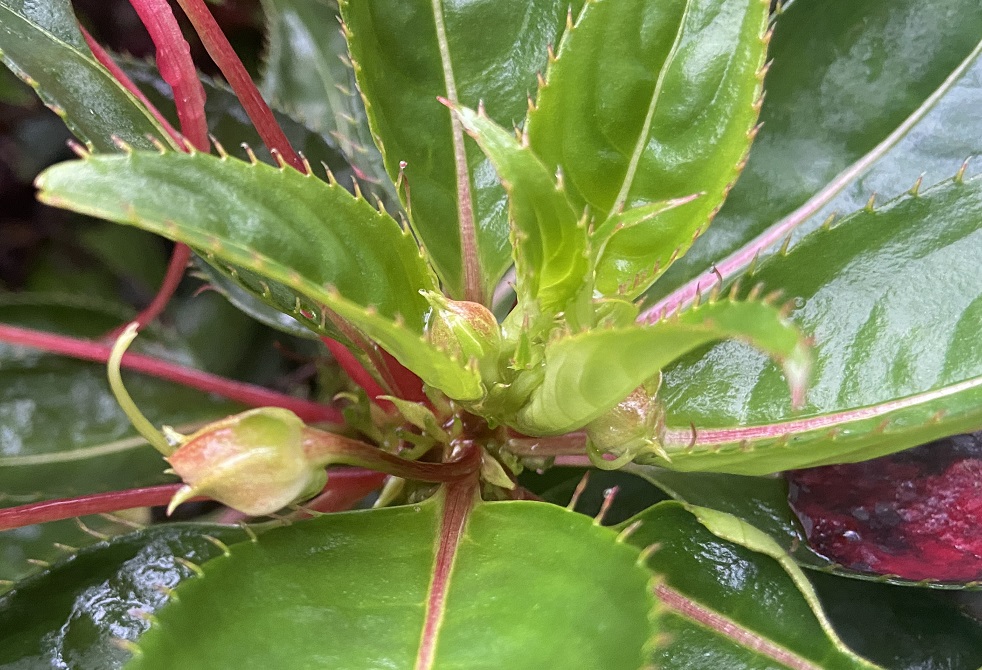
While the flowers were fabulous this year, I found their toothed, glossy leaves with a red to pink midrib to be quite stunning too. But let’s not forget those bulbous, yet pointed flower buds!
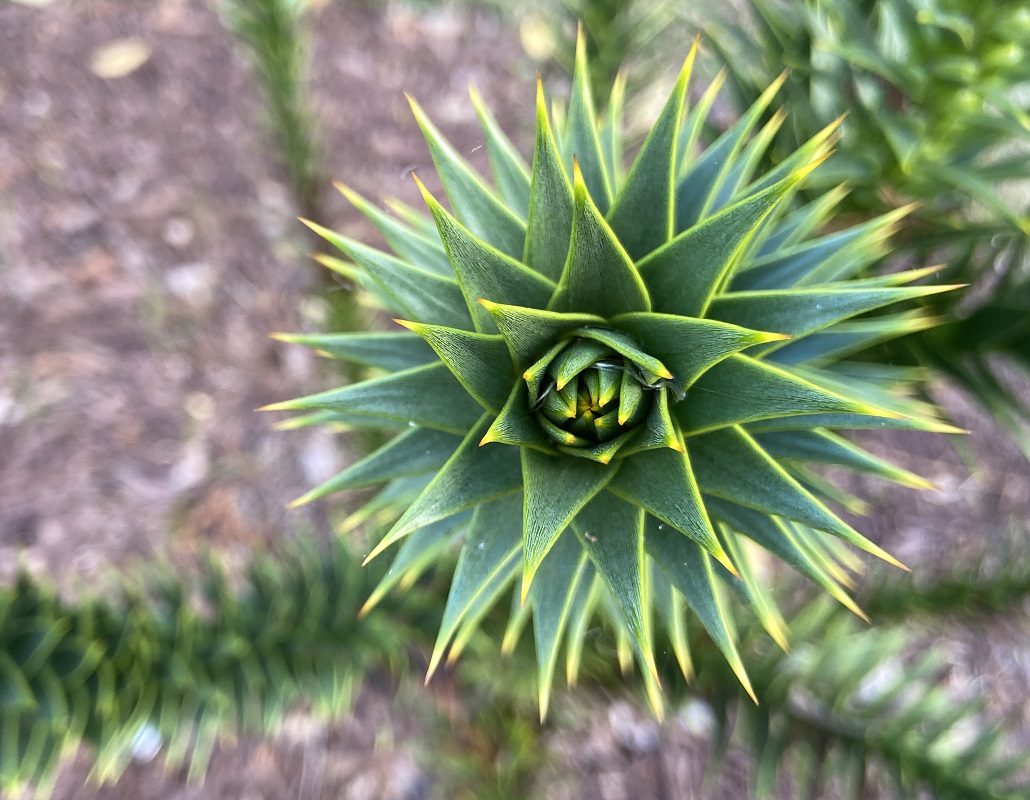
This must be one of the marvels of nature, given its lovely geometry. The foliage on Araucaria araucana (or monkey puzzle tree) is easy to get lost in. I think part of what I find so alluring is the severity of the tips of the foliage as well as the striation in the leaves. When I use the word severity, I do not use it lightly. This tree is wicked and not one you want to touch.
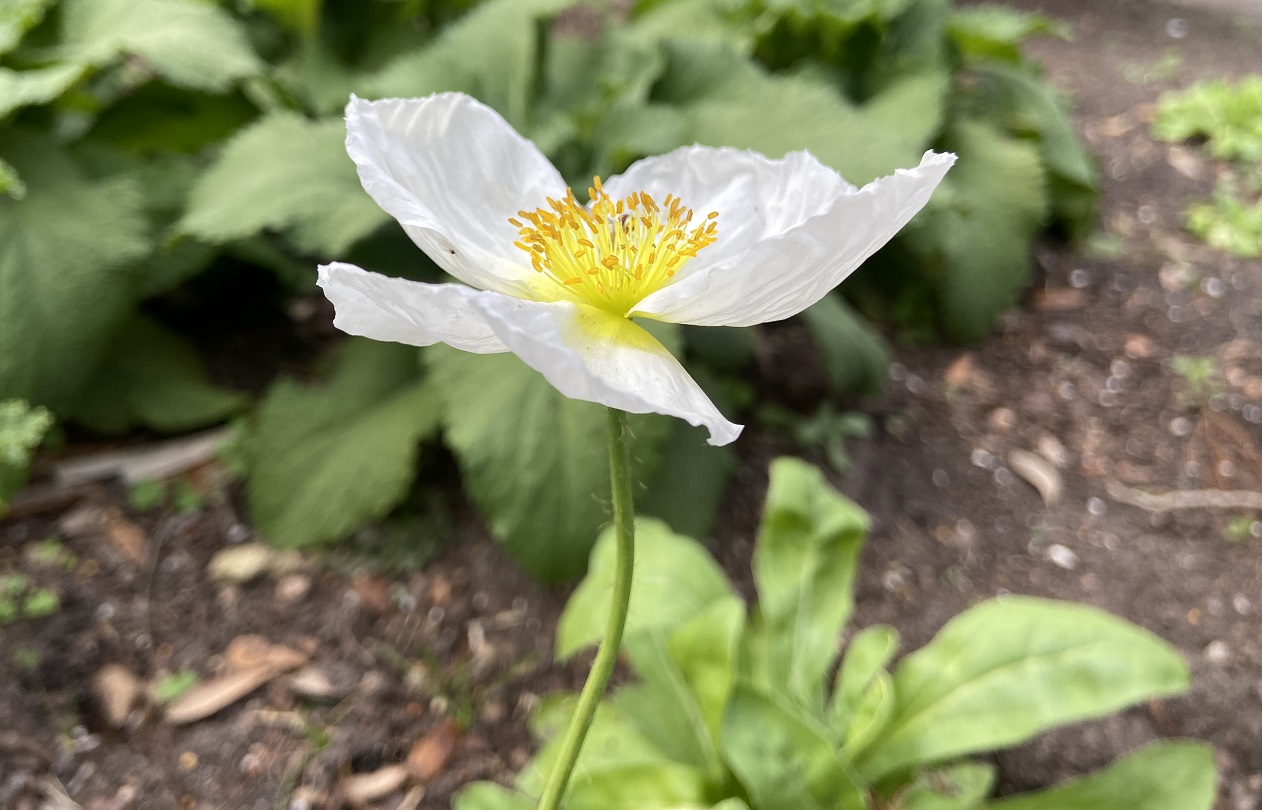
I love, love, LOVE poppies! They look much like one of my other absolute favorites, anemones. Yes, this one is a flower picture, but trust me when I say that the whole of Papaver nudicaule (or Iceland poppy) is a wonderful sight to behold. I particularly like this image because it shows how gentle and soft the petals are, while also allowing a glimpse at the golden stamens – gorgeous!
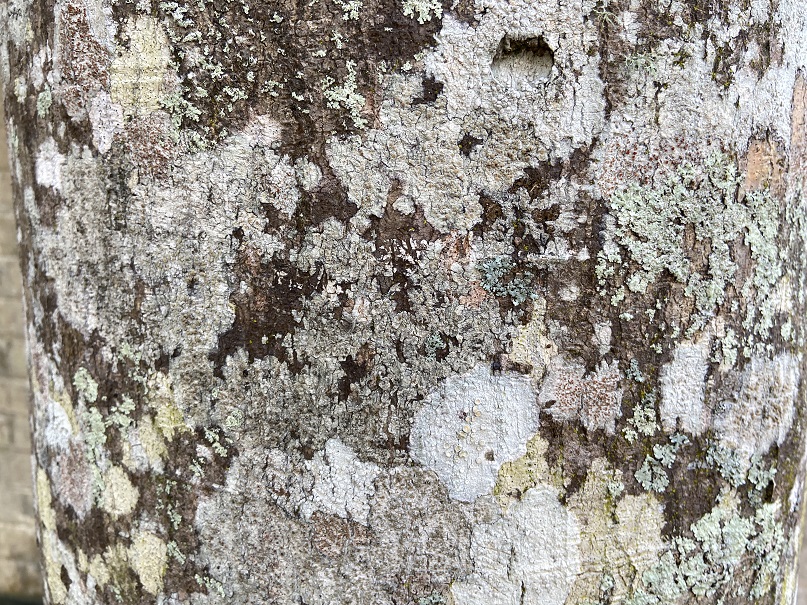
I mentioned in my last post how bark can be worth more than a passing glance. That’s because sometimes you see bark that looks like Ilex opaca (or American holly). The patterned bark you could easily argue is reminiscent of a camouflage design. Patches of brown, gray and cream tones combine, and in this case, are accompanied with blotches of lichen, which certainly don’t hurt its appeal!
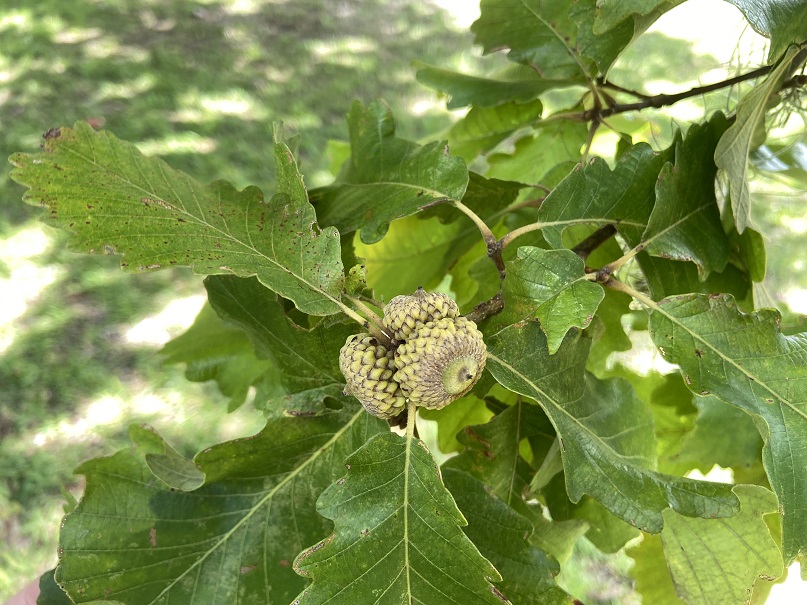
While a lot of what I’ve pointed out are things that are fully developed, something I enjoy seeing is the growth of certain plant parts. Quercus michauxii (or swamp chestnut oak), along with plenty of other oaks, has lovely acorns. I was lucky enough to spot these acorns while still young and not fully mature. The cupule, or the cap that houses the nut of the acorn, dwarfs the nut within and almost appears to be made of snake skin, thanks to its heavily scaled texture.
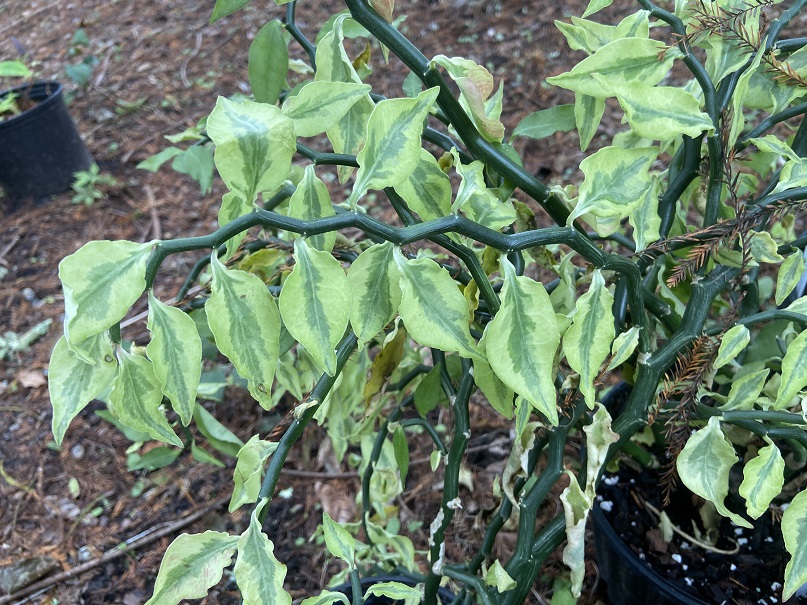
I am a sucker for unique branching on plants. Pedilanthus tithymaloides 'Variegatus' (or devil’s backbone) does not disappoint. These stems are wacky in their zig-zag design. When I look at this plant, I feel like I can hear creepy music from horror movies (you know, the music they play right before the villain jumps out and you create your own musical accompaniment of screaming like a cat who just had its tail stepped on. No? Only me? Okay, let’s just forget I mentioned that then…). For me, that invocation of feeling makes this even more of a cool plant. I also think its common name is quite fitting!
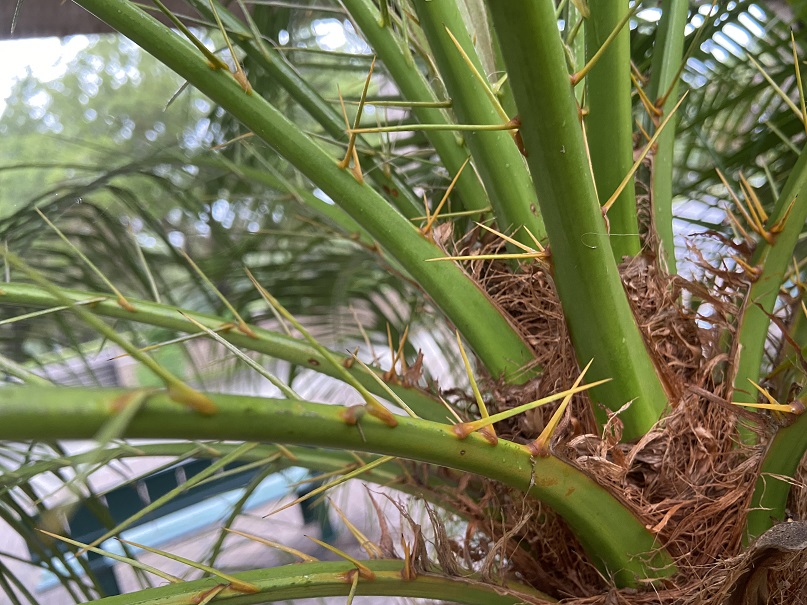
Like the monkey puzzle tree, this is another plant you want to admire with your eyes only. Phoenix roebelenii (or pygmy date palm) is heavily armed with spines at its leaf bases. While I certainly enjoy the overall look of the spines and find the added textural component to be quite alluring, I think I’ll probably make sure to never again get as close to it as I did when I took this picture.
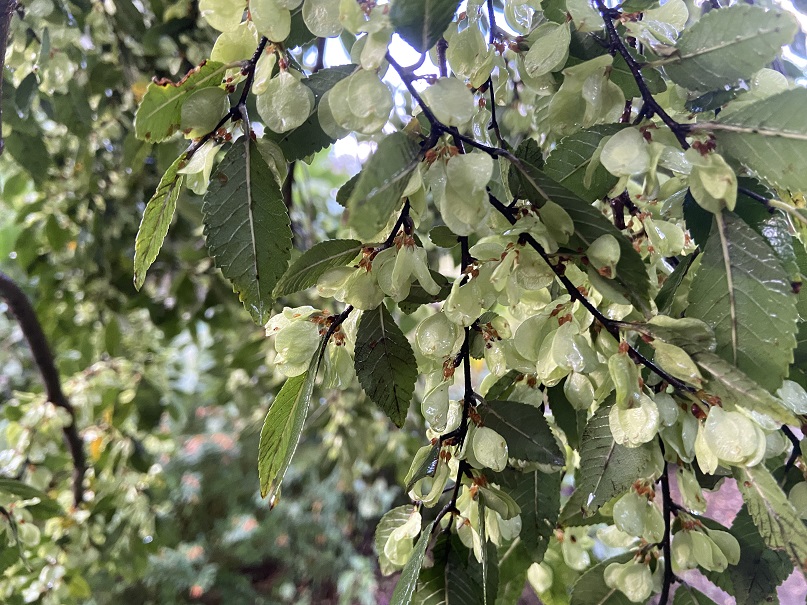
It’s certainly easy to mistaken these Ulmus parvifolia (or Chinese elm) fruit for flowers! They seem to hold that light, airiness that may come to mind when you think of flowers. However, these smooth, cream colored samaras that contrast so well with the dark stems and heavily textured leaves are indeed the fruit of the plant.
While this is only the tip of the iceberg, it’s easy to find beauty in so much of plants, beyond simply the flowers. The next time you’re visiting us at Brookgreen Gardens, or even just enjoying your own garden at home, be sure to peer beyond the flowers, you never know what hidden beauty you may find in the places you never thought to look.
See you in the gardens!
Hours
Hours: Monday & Tuesday 9:30 AM - 5:00 PM
Wednesday - Sunday 4:00 PM - 9:00 PM
For daytime admission, gates close at 4:30 PM. For their safety and the safety of our animal collection, pets are not allowed, nor can they be left in vehicles inside Brookgreen. Service animals that have received special training to assist disabled persons are welcome.
Tickets
Daily General Admission Tickets for 7 consecutive days
Children 3 and under: Free
Children 4-12: $14
Adults 13-64: $25
Seniors 65 & Over: $23
Location
1931 Brookgreen Drive
Murrells Inlet, SC 29576
Off US Highway 17 Bypass, between Murrells Inlet and Pawleys Island on South Carolina's Hammock Coast
843-235-6000
GOOGLE DIRECTIONS